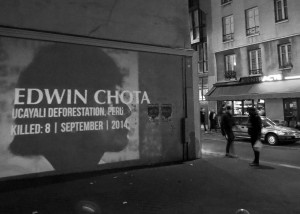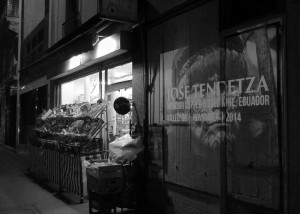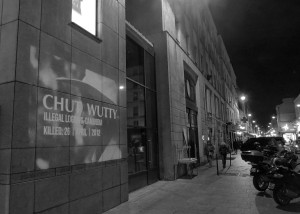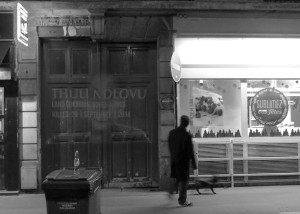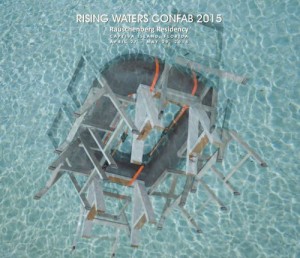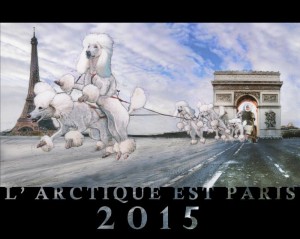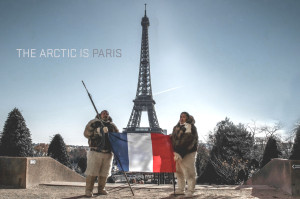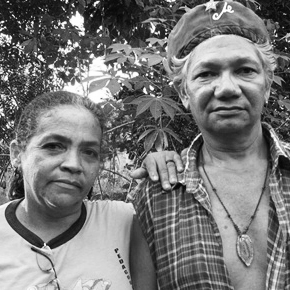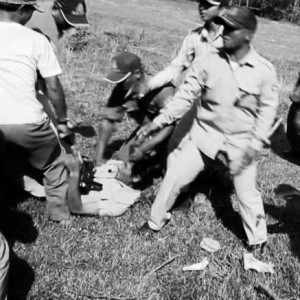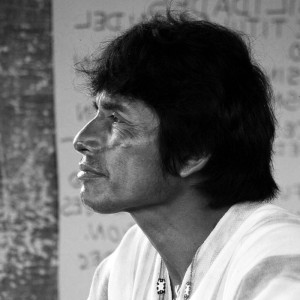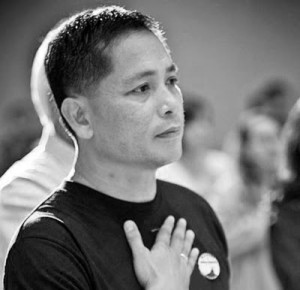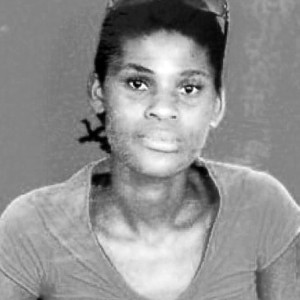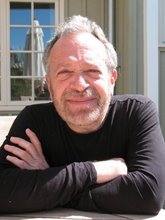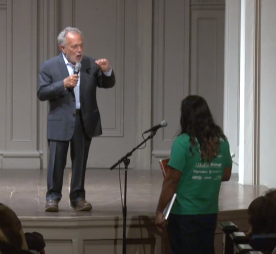“How do we carry the core purpose of civil society into the digital age?”
“As we return to an era in which more than half of full time workers may be freelancing, the systems of social supports are going to have to change.”
“Perhaps more people’s working lives will begin to look like those of independent artists and less like life-term nonprofit corporate climbing.”
“If the economy is undergoing fundamental shifts, what role do we want nonprofits, foundations, and other social economy actors to play?”
Excerpts, Philanthropy and the Social Economy: Blueprint 2016
Lucy Bernholz

These are all quotes from Philanthropy and the Social Economy: Blueprint 2016, by Lucy Bernholz. I offer them to suggest the range of topics covered in her latest annual forecast for people working in and interested in philanthropy and the social economy.
Every December for the past seven years, Lucy, a self-professed philanthropy wonk*, has written a forecast for philanthropy and the social economy – that is, the economy that uses private resources for public good. She provides insight into big ideas that will matter in the coming year, makes specific predictions for 2016, identifies buzzwords that will likely come into prominence, and offers glimpses into deeper concerns she sees coming over the horizon. She packs a lot into the forecast’s 24 pages. I’ve had the good fortune to work with her since the publication was just an idea. In general terms, my role is as sounding board, clarifier, and editor.
The latest installment, Blueprint 2016: Philanthropy and the Social Economy (link below), was published just last week by GrantCraft, a service of the Foundation Center. For the past six years, Lucy has been pushing her readers to expand their understanding of the social economy beyond just nonprofits and charitable giving to include a wider world that includes social enterprises (B Corporations, L3Cs), online alliances, social impact investing, informal networks, and political activism. She has also been a consistent voice urging greater awareness of our “digital civil society,” in other words, the ways we use our private resources for public benefit in the digital age.
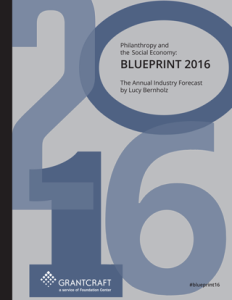
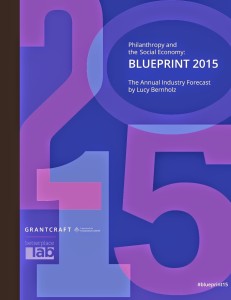
Last year’s Blueprint 2015 contained sections that provide a great summary of both the social economy and digital civil society. Especially if you’re not familiar with Lucy’s thinking or with these concepts, I highly recommend it. The Blueprints may be annual forecasts, but their value extends considerably beyond a single year.
The structure of work
Working with Lucy always teaches me a lot, and this year I was especially excited because one of the two big ideas she urges us to watch next year has also been on my mind: the structure of work. She considers how work is changing and how these changes apply to philanthropy and the social economy. She says:
The coming year is shaping up to see the issues of workers’ rights, wages, and income inequality raised to the level of national and regional political topics. It’s time to consider how the changing workplace and its impact on lives and communities influences nonprofits, foundations, and civil society.
She considers research on the impact of advances in robotics and automation. She mentions scholars and activists focused on inequality and on increasing wages for the lowest-paid workers. She provides statistics that support the conclusion that “almost half of us – with or without smartphone apps and the rhetoric of the ‘gig’ economy – are working by the project or one-off opportunity whether we recognize it or not.” We’re freelancers and part-time or temporary workers.
She emphasizes that, as we enter an era in which more than half of full-time workers may be freelancers, the systems of social supports (from social security to health care, taxes, childcare, and retirement funds) are going to have to change. Having spent almost all my working life as this kind of worker, I wholeheartedly agree.
One approach to revising – or reforming – our system of social supports was the topic of discussion in a different setting, a recent conversation at Seattle’s Town Hall, organized by Edward Wolcher and me under the series title, Penny U. The discussion revolved around the establishment of a minimum basic income – an idea championed by Martin Luther King, conservative economist F.A. Hayek, and Robert Reich.
Artists’ work
In Lucy’s Blueprint 2016, I especially appreciate that she includes artists in her thinking. The following two passages among others, appear in this issue:
Some of civil society has operated as a ‘gig economy’ for a long time. In particular, artists and activists have often spent their entire lives weaving in and out of ‘regular jobs,’ doing their work independently and as part of institutions.
Even if only a handful of the predictions being made about the future of work are accurate, many more of us, not just artists, are likely to need the skills of designing our own work lives as hybrid part-time workers and self-employed entrepreneurs rather than just taking full-time jobs defined by others.
And more
The 2016 Blueprint investigates and provokes questions about many other related topics. The short quotes I use to start this piece only begin to suggest the range of compelling topics and themes covered. Rather than spend any more time summarizing them, I simply suggest that you go to GrantCraft’s site (links below), download your own copy, and read the original.
Here are a few more quotes to tempt you:
“Given all the changes in the nature of employment, the spread of automation, and the fluctuating value of data, we’re bound to see new enterprise forms.”
“We need to develop governance models, organizational norms, and new policies for digital civil society.”
“We need to understand and adapt the ways data and algorithms are used to shape public policy.”
“In today’s online environment, the less data collected, the safer the individual.”
“What does a social sector characterized by networks, distributed governance, and greater rates of spending look like compared to what we know now?”
* Lucy Bernholz has worked in, consulted to, and written about philanthropy and the social economy since 1990. Now she is a visiting scholar at Stanford University and works at the Digital Civil Society Lab, which is part of Stanford’s Center on Philanthropy and Civil Society (PACS). Her blog is titled “Philanthropy 2173, on Twitter she’s known as @p2173, and she posts most of her articles, speeches, and presentations online at www.lucybernholz.com.
References
• Read the press release for Blueprint 2016 here.
• Download Blueprint 2016 here.
• Download Blueprint 2015 here.
• Connect with Lucy’s blog, Philanthropy 2173 here.
• Find more about the Digital Civil Society Lab here.
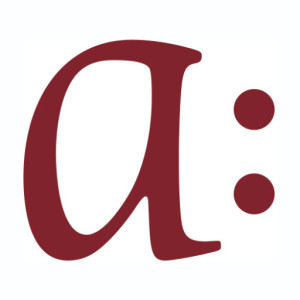
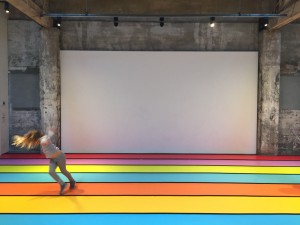


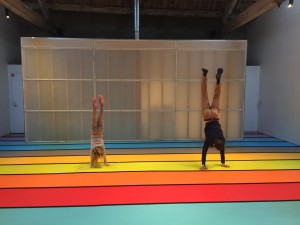

![]()


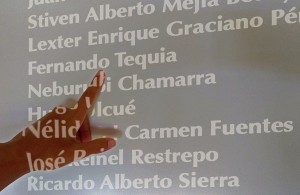 The Lost Defenders of the Environment calls attention to the 991 documented environmental activists who were killed or the victims of enforced disappearances from 2002 to 2014 in thirty-nine countries. It was created by Mika Yamaguchi, Orion Cruz, and Sarah Jornsay-Silverberg for
The Lost Defenders of the Environment calls attention to the 991 documented environmental activists who were killed or the victims of enforced disappearances from 2002 to 2014 in thirty-nine countries. It was created by Mika Yamaguchi, Orion Cruz, and Sarah Jornsay-Silverberg for 